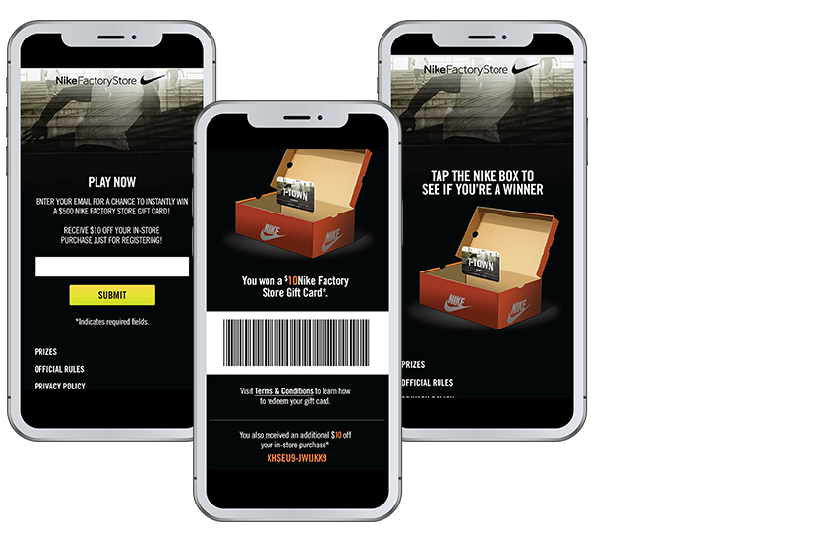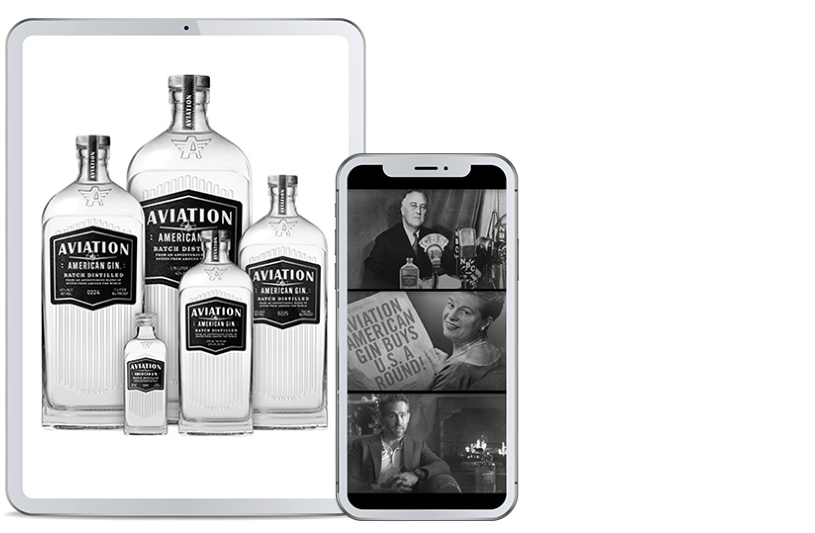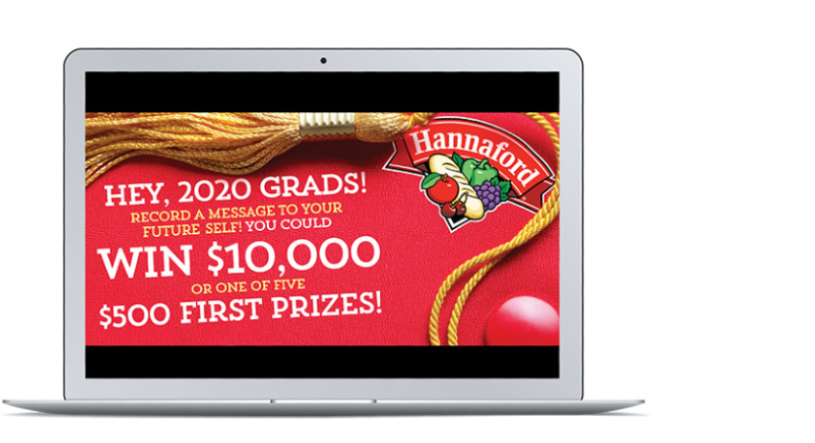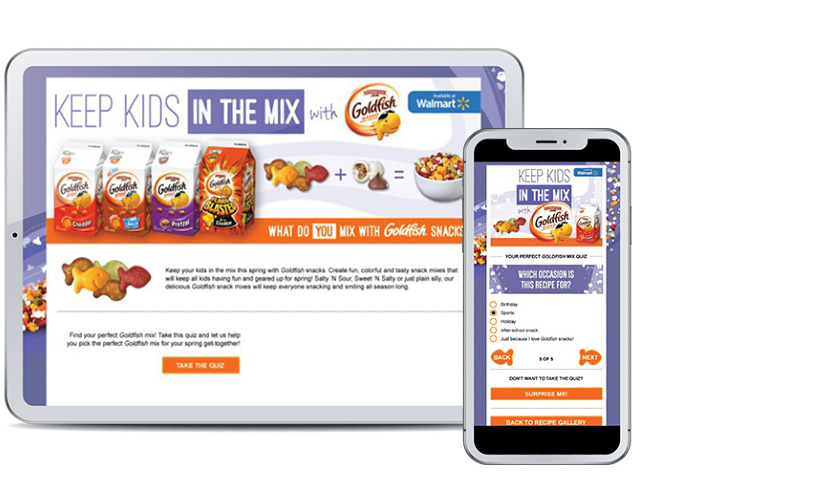Do you want to elevate your customer relationships and also collect insights that can be tailored for future experiences?
Engagement tactics help you be in the moment with your customers and elevate member participation in your loyalty program.
One of the best attributes of incentivized engagement is it allows you to achieve your marketing and business objectives through fun, entertaining and shareable digital experiences that educate, engage and drive purchases from your loyal customers.
You can design incentives to positively impact behaviors more effectively across the entire customer journey. Incentives are engagement tactics used to drive consumers back to your site and motivate purchases.
Let’s discuss four types of engagement tactics, offer some examples and help you figure out which is right for your brand.

Chance-to-Win
One of the most effective ways to collect opt-ins and zero-party data is through a chance-to-win. These types of engagement tactics are aspirational and motivate participation through the odds of winning exciting prizes – the more your audience participates, the more chances they have to win.
Because of their versatility, chance-to-win incentives help you achieve various marketing objectives, including:
- Brand engagement
- Customer acquisition
- Data acquisition
- Email acquisition
- Social acquisition
- Loyalty acquisition
- SMS acquisition
- Mobile app downloads
They also increase customer engagement and help you capture valuable insights.
Some types of chance-to-win incentives include Instant Wins, Sweepstakes and Real-time Incentives.
An Instant Win is a game of chance where registrants find out if they’ve won or lost instantly. Consumers register for the chance to win a prize. Winners are selected at random throughout the incentivized engagement period.
The Instant Win experience can be a simple win/lose message or a gamified experience. An Instant Win can be used as a stand-alone, or in conjunction with sweepstakes or other incentive type.
Instant Wins can help drive return visits/engagement when offering a daily chance to win.
A Sweepstakes can be stand-alone or used as an enhancement to an Instant Win to increase participation and reach consumers through a variety of formats such as text-to-enter, social hashtags and mobile app integration.
Sweepstakes are a type of contest in which people submit an entry for the chance to win a prize, and winners are picked at random. Brands that run sweepstakes typically offer a “grand prize,” such as a free vacation or a cash reward, and may also offer secondary prizes of lesser value, such as a free product or a gift card. Sweepstakes can run indefinitely or, more commonly, over a specified period.
Sweepstakes winners are selected at random from the entire pool of qualified entries. While some sweepstakes may be segmented by certain criteria (e.g., one winner per region), every entry has an equal chance of being chosen.
Real-time Incentives are referred to here as a “fire drill” because they create a sense of urgency.
Things like sports scores, weather milestones, live event promotion, holidays or even just a day of the week can trigger this instant give-a-way to mobilize engagement and help to meet these additional marketing objectives:
- Event Activation
- Sponsorship Activation
- Product Sampling
- New Product Introduction
- Efficient Offer Distribution
- Social Activation & Engagement
Example: Nike’s Instant Win engagement tactic
The objective here was to drive in-store traffic, capture valuable CRM data from consumers visiting new Nike Factory store openings and positively impact in-store customer acquisition.
Customers checked in on their mobile devices at Nike Factory Store locations to play for a chance to instantly win Nike gift cards. Win or lose, all participants received a $10 digital coupon they could immediately use toward an in-store purchase.
Key Statistics:
Seventy-two percent of consumers are motivated by sweepstakes to provide personal information to a brand.
Sixty-four percent of consumers said they were extremely likely to continue engaging with a brand after a positive incentive experience.
Related Content: How to Enhance Your Sweepstakes to Elevate Consumer Engagement

Offers & Rebates Promotions
There are several types of Offers & Rebates incentives such as Gift with Purchase and digital coupons.
These flexible solutions are customizable to achieve a variety of marketing objectives such as:
- Increasing purchase size and purchase frequency
- Motivating bundled purchases
- Activating retail programs and partnerships
Gift with Purchase sparks sales through guaranteed rewards, cash or charitable donations. Whether structured as a single-purchase or multi-tier program, these offers can create a tiebreaker for your brand off the shelf and drive more frequent purchases. Simply put, this incentivizes purchases by offering something of value with that purchase.
Digital coupons provide redemption flexibility, and security, and can be distributed across all digital marketing channels. Coupons are a great way to reward customers and can enhance a wide range of other digital marketing strategies such as:
- Printable Coupons
- QR Codes
- Single-use Coupon Codes
- Mobile Wallet Integration
Example: Aviation Gin’s rebate program. The goal was to encourage consumers to celebrate National Aviation Day by visiting local bars and restaurants to receive a free Aviation Gin drink.
After purchasing an Aviation Gin drink at a local bar, each participant visited the promotional site to upload their receipts and received $7 reimbursements to cover their drinks.
Key Statistic: Seventy percent of consumers take advantage of a rebate over a year.
Related Content: 6 Types of Quick-to-Market Promotions to Engage Customers (That You Can Launch Fast)

Brand Advocacy Promotions
Word-of-mouth advertising from your best customers to family and friends is a great way for your brand to remain top-of-mind in the marketplace.
Many of your best customers will do this all the time because they love your brand. And others might need an incentive to spread the good word about your brand.
For example, take 19 Crimes (an Australian wine brand) with its Infamous Insider Rewards loyalty program that offers many great ways to engage, including sharing brand experiences on social media in exchange for loyalty points.
That’s where prompting them to share original content about you comes in.
You can transform your loyal customers into brand advocates by incentivizing them to share original user-generated content. By sharing original content about your brand on Instagram, Twitter or Facebook, your best customers become brand advocates.
When customers share their user-generated content about your brand via social media or by uploading submissions to a contest site, you can give them rewards or chances to win prizes.
Social kickbacks are another great way to create brand advocates among your customer base. If you have loyal customers who enjoy talking about you on social media, then social kickbacks can help create new brand advocates.
You can reward these customers for following you on social media and sharing messages about your brand with others. By doing this, you spark higher levels of social engagement, create social buzz and promote content creation and sharing.
Example: Hannaford used an engagement tactic for 2020 graduates for their resilience during the pandemic while creating a halo effect for the Hannaford brand.
Hannaford asked 2020 graduates to upload a 30-second video message of encouragement to their future selves for a chance to win the $10,000 grand prize or one of five $500 first prizes. Video submissions were featured on the website in a public gallery so everyone could share in the positivity.
Key Statistic: Eighty-five percent of consumers find visual UGC more influential than brand photos or video.
Related Content: 5 Ways to Leverage Promotions to Educate, Engage, and Drive Purchases From Your Customers
Gamification
Consumers like fun things and when you gamify your incentives, you’re giving your advocates another reason to talk about you and share content with others.
What is Gamification?
Technically, it incorporates game mechanics to increase customer engagement, improve sales and elevate loyalty.
In other words, it’s about making things fun when you engage with a brand, using things like points, badges and leaderboards. These elements ramp up the competitive side of gamification for brands and magnify engagement levels.
It’s making it like a game for consumers to unlock more in exchange for some action, whether it’s a purchase, filling out a survey or social sharing.
Offering an interactive experience allows your customers to engage with your brand in a fun and entertaining way and also collect important zero-party data.
When you make promotions fun, you can engage customers and educate them at the same time. You can incorporate instant wins or sweepstakes into a gamified interaction with customers.
Gamification is all about making the brand experience like a game for your customers. It uses game mechanics to help you elevate customer engagement, sales and brand loyalty.
Bottom line? Make your engagement tactics fun for your customers and they will engage with your brand.
Example: A trivia incentive with Pepperidge Farm and Walmart called, “Keep Kids in the Mix with Goldfish.”
The objective was to drive purchase intent with product recommendations and keep Goldfish top of mind as a favorite springtime snack. Pepperidge Farm designed a for-fun online quiz for Walmart to create unique Goldfish combinations for different spring buying occasions.
Parents could complete the quiz with their kids and receive flavor and recipe recommendations based on their responses.
Key Statistic: Eighty-one percent of consumers agree that interactive content grabs their attention more effectively than static content.
Related Content: How to Gamify Your User-Generated Content (UGC) Marketing Strategies
Be Sure About Your Goals Before Launching Any Incentive
The key to offering any incentive is to set your goals for engagement. This factor weighs heavily on what type of engagement tactic you plan to run, along with defining how you want to reach consumers (in-store, on social media or at an event).
Incentives target goals such as customer acquisition, sales lift, customer brand advocacy and customer insights.
These four types of engagement tactics can help you achieve your marketing objectives, collect zero-party data and stand out from the crowd.
Understand your audience and offer incentives that will engage them.
If you want to talk about any type of incentive to increase loyalty program engagement, reach out to our experts here any time.
